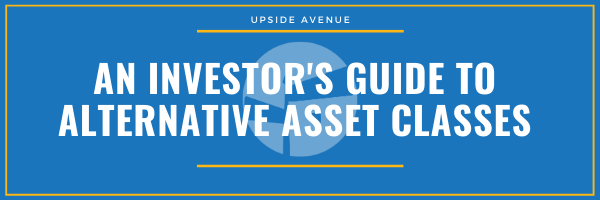Given that public markets are seeing huge
swings and there are massive amounts of capital being injected into the
economy, it’s a great time to consider expanding your investment portfolio to
include alternative asset classes. These non-traditional assets have
substantial benefits in times like this where economic uncertainty is at a
record high and the decade-long bull-market gains of traditional investments
are being wiped out.
What are alternative investments?
These alternative asset classes generally have
an inverse relationship to traditional asset classes. That means that when the
public markets are down, these assets either remain stable or in some cases
increase in value.
Alternative assets function as hedges against
stock market volatility and as part of a balanced portfolio help to alleviate
financial risk. The wealthiest people and organizations in the world utilize
alternative asset classes to enhance their portfolio – and you can too.
It is actually easier to define an alternative
investment by stating what it is not. Traditional investments take the form of
well-understood financial implements such as:
- Cash and cash equivalents
- Stocks
- Bonds
Alternative investments come in many forms –
but you can think of them as an investment that does not fit into one of the
traditional asset categories above. Some popular examples include:
- Starting your own business
- Private equity
- Venture capital
- Hedge funds
- Real estate
- Commodities
- Precious metals
- Art
- Loans
Alternatives versus traditional
asset classes
Alternatives investments can be great to
diversify your portfolio, but they aren’t the end-all-be-all of investing. You
should think of them as a way to considerably improve your financial plan, but
not necessarily to entirely replace your traditional asset investments. Check
out the chart below to compare asset types.
| INVESTMENT CONSIDERATION | ALTERNATIVE ASSETS | TRADITIONAL ASSETS |
| REGULATION | – Not always regulated by the SEC to the same extent as public markets | – Heavily regulated |
| VOLATILITY | – Decrease and isolate volatility exposure with non-correlation to public markets | – Susceptible to public market volatility |
| ACCESSIBILITY | – Generally a higher capital requirement for entry* – Tend to be more complex investments* |
– A low capital barrier to entry – Simple to get started investing in |
| LIQUIDITY | – Tend to be illiquid and generally should be considered long-term assets – Can provide great consistent cash flow depending on the type of investment |
– Usually very liquid assets – can provide cash flow depending on the type of investment |
| RETURN OF CAPITAL | – Often has outsized returns with value-add strategies – Can be tax-advantaged – Tend to have tangibility and intrinsic value |
– Steady averaged returns |
*
Upside Avenue helps fix this!
Of course, utilizing alternative investments
as a natural hedge against economic shocks (along with their other benefits)
versus investing in traditional asset classes is never a binary decision.
Strong investment portfolios exhibit diversification across asset classes, and
even within those asset classes. If your stock portfolio takes a hit, you have
these other investments which will hopefully hold their value, not fall as
much, or even increase in value.
Alternative investments are now
more accessible than ever
Access to these powerful investments has
historically been limited to high-net-worth individuals and entities. Upside
Avenue provides a solution that allows investors to gain exposure to these
investments starting at just $2,000.
Focused on investing in cash-flowing real
estate, everyone can now passively participate in alternative asset investing
without the need to be a landlord, manage deal complexity, all while retaining
the ability to sell back your shares on an annual basis. Now with Upside
Avenue, you can instantly get involved in private real estate ownership without
the host of headaches and drain on time and capital.


